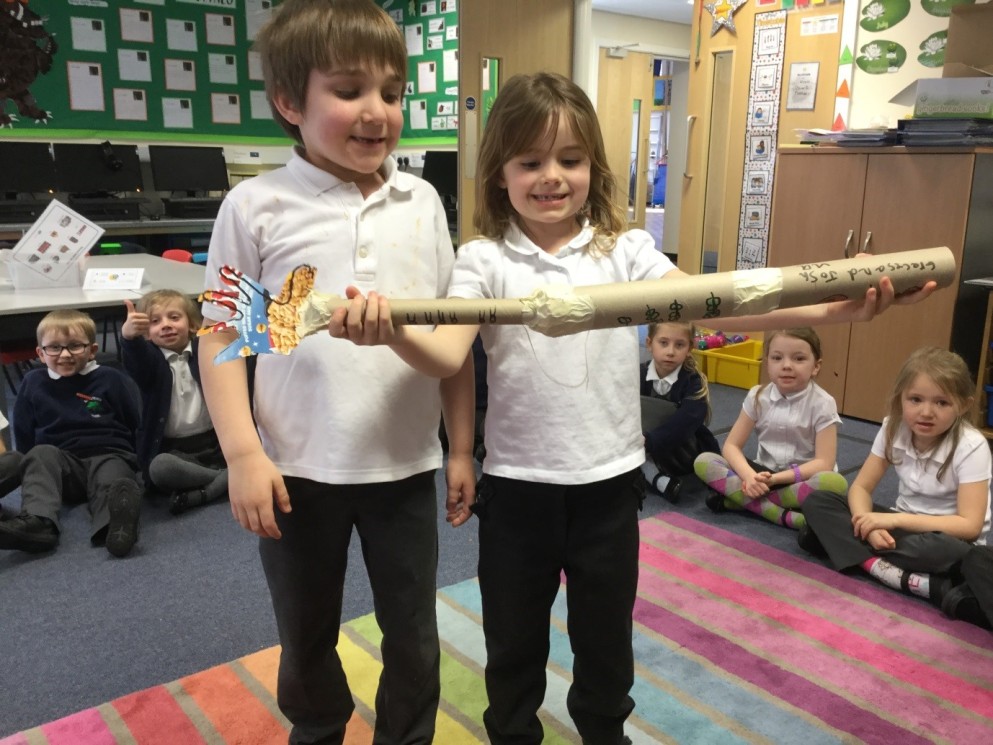At Rode Heath we strongly believe that teaching engineering skills to children has tangible benefits. In this section we aim to collect evidence that shows the impact that our project is having.
Here are some examples from Miss Moss, our Year 1 teacher:
Making Backscratchers
Joshua Duffin thoroughly enjoyed the engineering afternoon and making the backscratchers. The next day he came into school with his Dad’s backscratcher and said that an extendable backscratcher would be an even better design.
Grace Swinnerton was very excited after we spent the afternoon designing and creating a backscratcher. She not only won the best design for a backscratcher she then persevered with her model and it was by far the best design in the class. This was a wonderful achievement; Grace really came into her own with this project.

Show & Tell
Noah Jury decided for his show and tell to bring in a project he had been working on at home. He had made a mechanical robot which he has joined together with nuts and bolts and has connected this to batteries in order to programme it to move in simple steps.
For his show and tell Ethan bought a book into share with his friends called ‘How things work’. The book is now proudly on display in our classroom and Ethan shares this book with his friends in Golden Time and quiet reading time
Year 5 are encouraged to reflect on which EHoM they are using in their learning.
Here are some thoughts on a recent practical maths lesson:

Some more thoughts from Year 1:
We have been learning all about ‘Houses and Homes’ as our topic this term and have linked this closely with our science topic on ‘materials’. The children learnt that engineers who design roofs and the materials for them, have to think carefully about weather conditions for buildings in all different climates.
In groups the children were given the challenge to design and construct a roof that would protect a cardboard house from getting wet. The children chose from a variety of materials and some of the language they used was fabulous. One child said that their roof needed to overhang their house so that the water wouldn’t splash onto the sides of the building. Another said not to use wooden sticks on the roof as wood soaks up water. A group of girls insisted on using tinfoil as they said the water would run off their roof easily. What was wonderful about this investigation was that all the children had their own ideas and were not worried about what other groups were doing.
After the investigation the children were able to say what was good about their house and roof design and what they would change to improve it.
Leading on from our ‘Waterproof the roof’ challenge the children used their homes as part of an investigation linked to ‘The Three Little Pigs’. The children used an air cannon to blow their houses down just as the wolf did in the story. The children had very different ideas about what would make a house ‘strong’ enough to sustain the air cannon. When evaluating their design once child thought their design was strengthened because they had attached it to a platform. The children were given opportunities to test their classmate’s houses for sustainability. They thought some were hard to blow down because of the size, weight or high walls. It allowed for some great discussion about skyscrapers and bridges and how they survive severe weather conditions. The children showed great independence with both of our engineering tasks this term and becoming more able to choose materials fit for purpose. They can quickly discuss and discard materials simply on sight or touch and have found several ways to strengthen their designs such as layering, building up, supporting and fixing down onto other materials.

